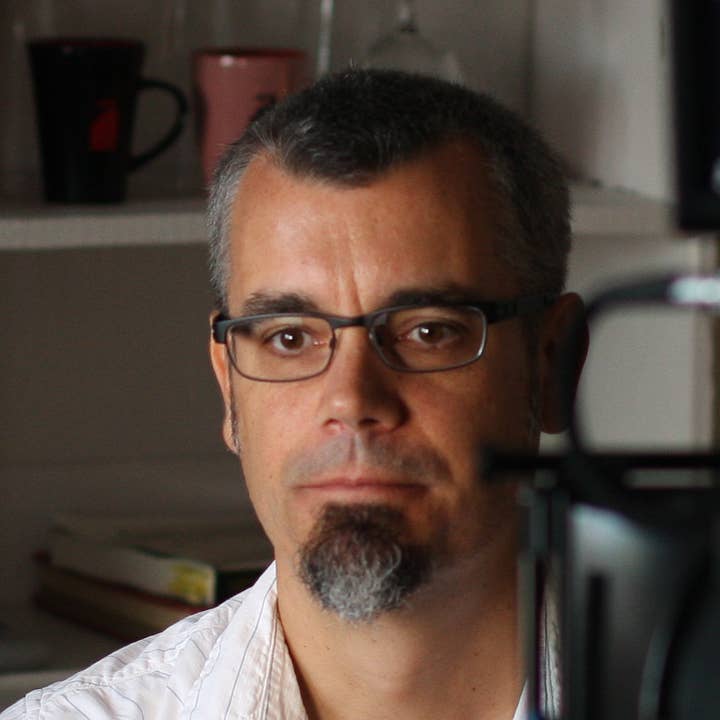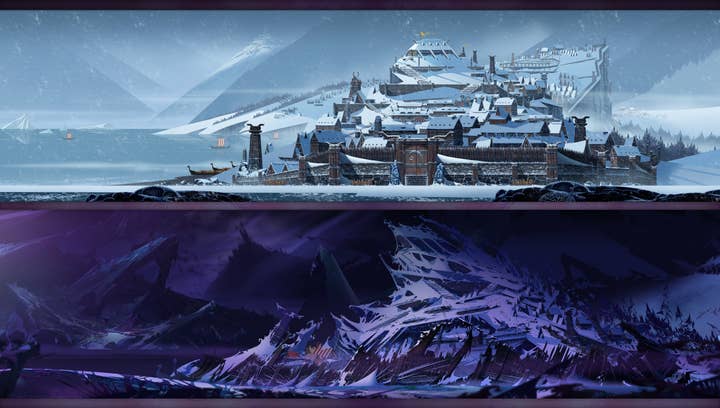End of a Saga: What Stoic learnt from the Mass Effect finale
Studio co-founder and ex-BioWare dev Arnie Jorgensen joins producer Zeb West to discuss ending the Banner Saga trilogy
Trilogies in the games industry are often just a series of loosely connected stories rather than a single cohesive narrative, typically an excuse to go on one adventure after another until there are no adventures left and the whole thing can be rebooted.
In essence, the games industry rarely takes advantage of the trilogy format in a traditional sense: to tell one epic story.
Of course, a trilogy is nothing without a conclusion which often leads developers and publishers alike to keep pushing. Every great saga is judged ultimately by how it ends, and there's likely not a person working in the industry today who doesn't remember the carnage which ensued following the conclusion of Mass Effect 3.
With the narrative-focused Banner Saga series set to conclude next week following the launch of its third installment, indie developer Stoic is in the precarious situation of having to actually deliver a satisfying conclusion to a project six years in the making; a prospect so terrifying that most developers either stumble at the last hurdle, or keep running until there are no games left to make, and the series simply collapses under its own weight.
It's a reality which has not failed to dawn on the team, the founders of which were working at BioWare's Austin studio during the Mass Effect 3 debacle.

"Being on the inside of the studio, even though we weren't directly working on the game, we were even more cognisant of what was going on and where maybe there were some missteps, and we really took that to heart in our own game," Stoic co-founder Arnie Jorgensen tells GamesIndustry.biz.
"Here's the point: if people play our game and they say: 'Finally someone nailed it. They finished an epic and I feel like it was a satisfying ending for my playthrough. My personal playthrough'... it really feels satisfying for the player. We focused on that with the Banner Saga 3, really trying to make sure people feel that way and we hope we did it."
Although not directly hit by the explosive rage of a fandom with a victim complex, bearing witness first-hand to the fallout informed their approach to the Banner Saga and it's countless branching narratives.
"We've always known from the start of the Banner Saga 3, and even earlier, we have to stick the landing," says Jorgensen. "If we don't stick the landing, then we're going to feel like it was all for naught, so we've taken it very very seriously."
It's something the studio takes very seriously indeed and, after seven months in development, they restarted the entire game from scratch.
“We've always known from the start of the Banner Saga 3, and even earlier, we have to stick the landing”
Arnie Jorgensen, Stoic co-founder
"We started from the end to make sure we were sticking the landing then went back and wrote it from the front to the back, knowing exactly where the story was going to end," Jorgensen continues. "So we knew where the story was gonna go, six years ago, but how you get there has changed... So on this one we took it very seriously, and we started with the endings."
The maelstrom of fan outrage which soured the conclusion of Mass Effect 3, and the studio's attempts to smooth things over with a free extended cut release, underlined not only the importance of getting it right, but where exactly it all went wrong, as Stoic producer Zeb West explains.
"I can remember early pre-production conversions where we brought that up and in thinking about it, in the ways in which BioWare ended up changing their ending, were less about radical changes to the story, and more about providing a sense of closure to an epic," he says.
"I think that is where we put some of our focus, and also just really 'hey, did you make these choices throughout the games? Well guess what, here are the consequences to those choices.'
"Not necessarily trying to steer everyone into a couple of primary branches, which I think is what kind of gives you the feeling it didn't matter, and we want to make it feel like it did matter. There are some big differences in the endings, and then there's also like a million micro-differences with who you see at the end and who's with you and who's there in those moments."

Now with over 40 characters, many of whom can die in abrupt and surprising ways, coupled with two tandem storylines and all of the perilous choices in tow, Banner Saga has become a complex spider's web of narrative possibility. It has, in fact, grown so complex over the course of three games that Stoic relies on its fan community to help keep things on track. The development team even refers to the Banner Saga Wiki which, according to Jorgensen, is "some of the tightest design doc stuff we have."
"One thing we relied on Banner Saga 2, and more so in Banner Saga 3, is we have a really great community," he adds. "And within that we have an even deeper community, people who have been with us since Banner Saga Factions [the series' proof of concept], and they help us find problems with the game and lore issues.... It's really a multi-headed approach to making sure this game is airtight as we can make it."
"Hey, did you make these choices throughout the whole games? Well guess what, here are the consequences to those choices"
Zeb West, Banner Saga producer
The dedicated community is something which has supported Stoic since day one when it raised over $700,000 on Kickstarter for the first game. It was also why studio bosses decided to Kickstart the final game after forgoing that option with the second installment.
"One of the crazy benefits of that was suddenly 20,000 people are really engaged," says West. "The community that came along with us was really valuable from that first Kickstarter. And the core of that, we had invested in a community manager after Banner Saga 2 just to really try and maintain that direct connection that we valued from Banner Saga 1.
"During the Banner Saga 2 process, the team kind of went dark just trying to deliver the game as quickly as they could, but we were missing that feedback and direct engagement from the community. So for Banner Saga 3, that was a big reason why we Kickstarted [it] to really have that community involvement throughout that process."
Banner Saga has morphed from its original scope into something far bigger than the developers ever envisaged. It was never intended as a trilogy but in order to do their original vision justice, the studio founders knew a single instalment wouldn't suffice. Stoic wants the complete trilogy to feel like a single game, and while it's not something the team regrets, it's certainly not something Jorgensen would recommend.
"I wouldn't suggest anyone really do this, and the reason is, if we're really trying to create a game that's one game, but it's over the course of six years, play styles change over the time period, the games that people are interested in change, your game style may become outdated, the look may become outdated," he says.
"So by signing yourself up to three games that are really back-to-back, single experiences is really, really risky. It worked out for us, but that would be something our studio would be really careful about in the future."








